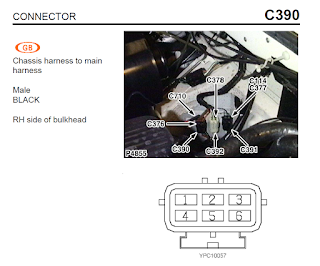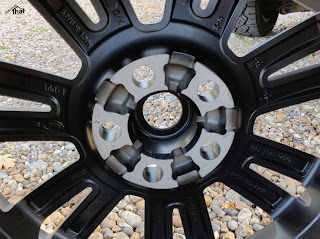Fender has been blowing fuses for a couple of days. It was mainly fuse 2 to start with and then Fuse 15. These control the stereo and clock and the heated rear screen. That last bit made no sense because that is not fitted!
I thought it was worth writing a few words on this because it was a particularly frustrating fault to find.
It took me half of yesterday to eventually narrow the fault down to the left hand indicator and most of today to find the cause.
Fuse 2 and 15 were red herrings. I had to fix a dodgy joint on Fuse 2 which was arcing and Fuse 1 caused more confusion because it would blow if I tried the hazards with fuse 3 removed!
With Fuse 2 fixed I was reliably getting a blown fuse 3 when I used the left hand indicator or the hazards. The dash tell-tale light was also dim. If I was quick I could eventually test it without blowing the fuse but I still got through at least a dozen 15 amp fuses before I was finished.
I was misled by the immobiliser, which did not blow the fuse, despite flashing the indicators. This took me in the wrong direction for a while.
Removing the flasher unit stopped the fuse blowing but, of course, the indicators did not work at all!
They are all LED indicators and use an appropriate flasher unit. I had the old, non-LED, flasher unit so I swapped that over just to rule out that bit.
I sat with the circuit diagrams for an hour or so working out where these things came together. Only the hazard warning light switch stood out but I had a spare and it made no difference using that.
I went back and had a closer inspection of the indicators when they were operated by the immobiliser. I could see that the left hand indicator was dull but, my guess, not on for quite long enough to blow the fuse.
Back to the circuit diagrams. It had to be the green wire with the red stripe. It was the only common denominator.
With half the dash out I traced the wires and with fuse 3 removed I was able to test the resistance to earth at the hazard switch.
The working right hand indicator had a resistance of 6k ohms. The faulty left hand had a dead short to ground. That was not right.
The trouble is that all the wires are connected at a header the only joint was for the run to the rear of the car.
I was able to quickly rule out the part of the harness that runs to the rear of the car but that still left some tightly bundled cables behind the dash and a long run under the bonnet.
I started from the left hand indicator and worked backwards. The harness was trapped behind the left hand wing. With a bit of fiddling I was able to get my arm in and free it.
That done, I tested and that was it. The fuse no longer blew. At last.
I'd been at it long enough, so I decided that as it was working, I would leave it at that for now. Ideally I need to take the wheel arch off to gain access to the damaged cable and tape up or repair any weaknesses in the harness but that's for another day.
I've put the car back together, checked all the lights and taken it for a good test drive with left and right hand junctions.
All OK.
==

























































